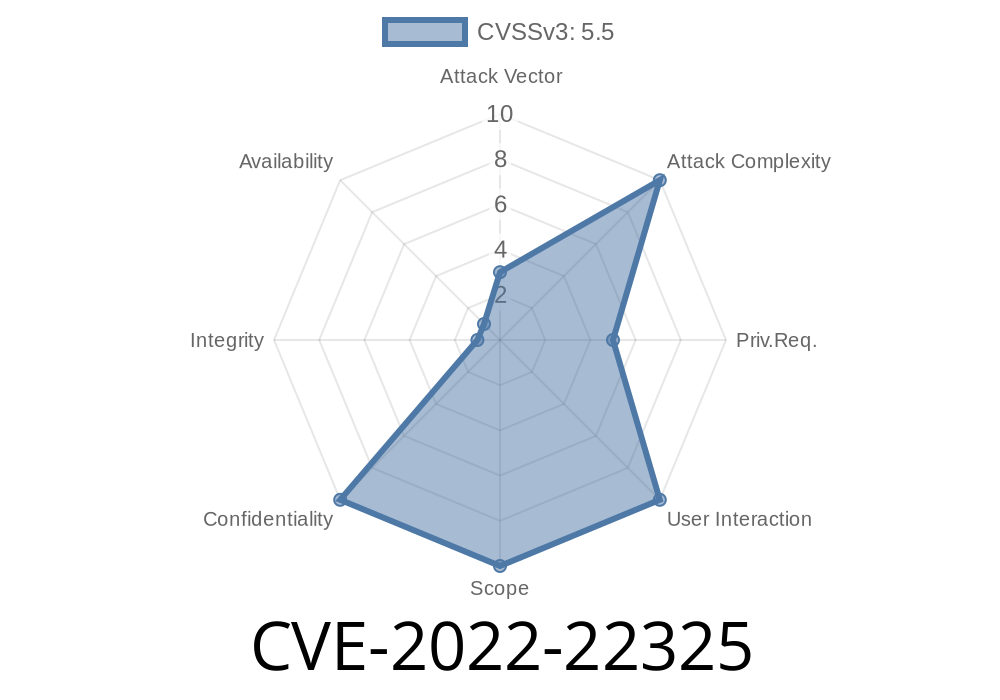CVE-2022-22325 is a recently discovered security vulnerability in IBM MQ (IBM MQ for HPE NonStop 8.1.) that can potentially allow a local user to access sensitive information through a stack trace. The flaw has been assigned an IBM X-Force ID of 218853. In this post, we will delve into the details of this vulnerability, examine the code snippets to understand the issue, and discuss the potential exploit details to help raise awareness among developers, administrators, and security professionals.
The IBM MQ Vulnerability (CVE-2022-22325)
IBM MQ is an advanced message queuing technology that serves as a robust middleware solution to facilitate secure and reliable communication between applications and services. IBM MQ for HPE NonStop 8.1., a specific version of the IBM MQ product, has been found to disclose sensitive details under certain conditions when an exception occurs and the application generates a stack trace containing useful debugging information.
What makes this vulnerability noteworthy is that a local user who should not be allowed access to such sensitive data could potentially exploit the leaked information to gain knowledge of critical system internals and potentially escalate their privileges or carry out other malicious activities.
Code Snippet
The vulnerable point in the code excerpt would be the error-handling mechanism, with stack traces containing sensitive information leaked as plain text. Consider the following stack trace, where memory addresses, file paths, and other sensitive information might be exposed:
catch (std::exception& e) {
std::cerr << "Exception caught: " << e.what() << std::endl;
std::cerr << "Stack trace: " << std::endl;
// Vulnerable stack trace printing code
std::ostringstream stream;
void *array[10];
size_t size;
char **strings;
size = backtrace(array, 10);
strings = backtrace_symbols(array, size);
for (size_t i = ; i < size; i++) {
stream << strings[i] << std::endl;
}
free(strings);
std::cerr << stream.str() << std::endl;
}
The above snippet catches exceptions and prints a detailed stack trace that potentially leaks sensitive information to a local user. The user could then use this data to attack the system more effectively.
Exploring the Exploit
To successfully exploit this vulnerability, assuming a user has access to the stack trace data, the following steps may be undertaken:
1. Obtain the stack trace: The attacker would first need to trigger a scenario in which an exception is thrown, and the vulnerable code snippet generates a stack trace that discloses sensitive data.
2. Analyze the stack trace: With the stack trace information at hand, the attacker can inspect the leaked data for critical details such as memory addresses, file paths, and other system internals.
3. Craft a plan of attack: Armed with the sensitive information, the attacker can then determine potential avenues of attack, such as identifying opportunities for buffer overflow or path traversal exploits, to further compromise the system's integrity and security.
Protecting Against CVE-2022-22325
IBM has acknowledged the vulnerability and provided the software update (IBM MQ for HPE NonStop 8.1..2) to address this issue. It is highly recommended that users update their installations to the latest version to mitigate the risk associated with this vulnerability. Additional security measures, such as restricting local user access and ensuring proper logging and monitoring, can further strengthen the defense against such attacks.
Original References
For more information about this vulnerability and how it has been addressed, you can refer to the official resources listed below:
1. IBM Support: IBM MQ for HPE NonStop Security Bulletin
2. NIST National Vulnerability Database (NVD): CVE-2022-22325 Detail
Conclusion
CVE-2022-22325 serves as an essential reminder of the importance of diligent error handling and data sanitization in software development. By understanding the nature of such vulnerabilities, taking the necessary precautions, and promptly addressing potential security flaws, we can minimize the risk of sensitive information disclosure and maintain secure and robust applications and systems.
Timeline
Published on: 05/13/2022 17:15:00 UTC
Last modified on: 05/23/2022 19:04:00 UTC
